eNews August 19, 2021
|
In the News
What Credit Professionals Can Learn from Social Media Influencers
Annacaroline Caruso, editorial associate
It may be difficult to think of the social media influencer and credit worlds colliding. But some influencer characteristics are actually key to becoming a better credit professional. Chris Doxey, CAPP, CCSA, CICA, CPC, president and owner of Doxey Inc., described an influencer as being impactful, motivated and a leader. “I look at influencers and leaders as having the same traits,” Doxey said during a recent executive education webinar, Credit and Collection as an Influencer: An Interactive Roadmap. “Some of the most important traits are having passion, being able to communicate well and sharing knowledge.”
In order to become a successful credit influencer, communication is paramount – not only with customers, but also internally with sales and management. “In the context of business, we need to communicate and show positive results.” she said.
Consistency is also crucial if you plan on establishing an influencer role in your credit department, Doxey explained. You need to be willing to promote your ideas. “An influencer needs to be consistent and predictable,” she said. “It has to get to a point where your audience looks forward to hearing from you. ”In this case, your audience could be anyone from customers to company management to industry group members. Once you have an engaged audience, you can start building an action plan, Doxey said.
Approach your regular credit and collection duties with an influencer mindset. Depending on your department, that might mean taking initiative and implementing some level of automation. You might also want to take a fresh look at old processes, e.g., how your department invoices customers, manages receivables or approves credit. “It really starts with understanding your process and implementing best practices,” Doxey explained. “It’s about understanding where there could be an area for improvement.”
For example, electronic invoices result in quicker payments and happier customers. “Automation is not the end-all be-all but it can help you get to this influencer role and establish best practices and best-in-class results,” she said. “If we get into a world of automation, we’re reducing the risk of manual errors.”
Before launching a new project, like automation, it is key to identify stakeholders who can support your ideas and goals. “Having a sponsor is one of the most important things you could ever do if you’re kicking off a high or medium level project,” Doxey added. You will need to determine what your stakeholders would like to know about your project and then develop the metrics and analytics to match. Be sure to find the right balance of metrics that accurately reflect your results. “One metric isn’t going to tell you the whole story,” Doxey said. “You have to put things into context. Sometimes metrics can send an incorrect picture and may cause staff to overreact.”
You also do not want to start off with an overwhelming amount of data that you might struggle to track. “One of the key challenges with developing metrics and analytics is starting with too many metrics without an automated way of retrieving the data,” Doxey added. “Start small, understand your data and how you will be collecting it.”
Then when you have a new goal or project, start these steps over again. Like anything else, establishing an influencer mindset takes practice. “The way to define success as an influencer is when people start asking you questions and asking you to contribute to other best practices in your company,” Doxey said. “You know when you’ve arrived because you’ll see a lot of invitations and be asked to present your best practices to large audiences.”
The Commercial Construction Index Reports Promising Trends in the Market:
Will It Continue?
Bryan Mason, editorial associate
Credit managers can expect to see improvements in the construction industry over the next year, according to the U.S. Chamber of Commerce Commercial Construction Index for Q2 of 2021.
The Commercial Construction Index (CCI) is a quarterly economic index designed to measure the outlook of the commercial construction industry and result confidence in projections for the industry. Despite the chaos occurring in the global supply chain, analysis of this report indicates a promising future for commercial projects – rising three points to reach 65 in Q2 of 2021.
“New business showing a growth of 3 points is a positive trend for suppliers,” said Connie Baker, CBA, director of operations for NACM Secured Transaction Services (STS). This increase can be derived from contractor’s confidence to improve in certain areas in the construction industry. The key areas fueling these positive projections include:
- The ratio of average current to ideal backlog – rose three points to reach 72 in Q2 of 2021 (pre-pandemic score was 76 in Q1 of 2020)
- Revenue expectations for the next 12 months – rose four points to reach 61 in Q2 of 2021 (pre-pandemic score was 70 in Q1 of 2020)
- The ability of the market to provide new business in the next 12 months – rose three points to reach 62 in Q2 of 2021 (pre-pandemic score was 76 in Q1 of 2020)
“Even though delays dropped from 80% to 72% due to the pandemic, this is still a high percentage that would affect the ability of credit managers to collect timely which could impact their DSO,” Baker said.
Although these projections are promising, the commercial construction industry is still attempting to fully recover from the global shutdown of 2020. According to Chris Ring of NACM STS, credit professionals may be hesitant to celebrate this news considering the various issues that still plague the industry today.
“The credit community is by in large a ‘hope for the best and expect the worst’ community,” Ring said. “The good news in this report is hampered by bad news of skilled worker shortage and price increases. So, I believe most construction-oriented credit managers will probably not view this report as a net positive.”
The CCI did share some difficulties contractors have endured – claiming one in three contractors are experiencing shortages when acquiring wood and lumber. Additionally, the CCI also states that 52% of contractors are planning to hire more workers over the next six months, but 88% of contractors report moderate to high levels of difficulty in finding skilled workers.
However, Ring advised credit managers to remain diligent in keeping up with positive trends to avoid potential setbacks that can hinder their company’s progress. “Good credit managers have always been inclusive with other departments: sales, purchasing, distribution, HR, etcetera,” he said. “This allows the credit manager to always be looking for positive and negative trends that affect cash flow.”
Some negative trends are unavoidable, but being aware of these trends can help ease the impact by preparing for what lays ahead. Therefore, credit professionals can be less likely to suffer more decline than they already have. So, Ring suggests credit professionals be mindful of “covid shutdowns, price increases and supply chain [issues]” as the commercial construction industry attempts a full resurgence.
Baker also advises credit professionals to ensure they aren’t overextending due to price increases and delays – as delays that may extend payments mean higher credit limits will be required for customers. “Continuing to secure their receivables through preliminary notices, mechanic liens and bond claims is extremely important,” she said. “Securing their debtor through UCC filings can also be a benefit if their customer stops paying.”
What Contractors Can Do to Address Rising
Material Costs
Garret Murai, Nomos LLP
From lumber to used cars to pastrami sandwiches, prices are rising. This past month, at a town hall meeting in Cincinnati, Ohio, President Biden acknowledged that inflation was increasing, responding to a question from a restaurant owner about labor shortages, “I think your business and the tourist business is really going to be in a bind for a little while.”
Although construction companies typically don’t work in the same small margins that restaurants do, labor shortages and material price increases have nevertheless impacted the construction industry. According to a recent report by Cumming, the cost of construction materials from lumber to steel to gypsum have gone up over the last 12 months, in some cases nearly double.
For contractors entering into construction contracts and those performing work under existing contracts, the increasing cost of materials and shortage of labor creates challenges, some of which can be addressed through contractual provisions and the framework of those contracts. Here are a few things contractors might want to consider in today’s environment:
- Time and Material Contracts: Time and material contracts, whereby the owner pays the contractor for the contractor’s labor and material plus an agreed-upon fee, shifts the risks of price increases from the contractor to the owner. You can also include modified time and material provisions whereby the contractor will perform certain higher cost-risk work on a time and material basis, only.
- Building in Bigger Margins: Contractors can also build in bigger margins in their fixed fee and guaranteed maximum price contracts to account for price increases and/or include larger amounts for contingencies. While this will make a contractor’s bid less attractive to an owner who is soliciting several bids, sometimes it’s better to lose out on a job, than to take a job and find that its costs exceed the anticipated profit.
- Cost Escalation Provisions: Contractors can also include a cost escalation provision in their contracts whereby the owner will pay for costs exceeding the contractor’s take-off calculations. These can be drafted in a variety of ways but typically provide that the owner will pay for increases in material costs which exceed a contractor’s take-off calculations or if they exceed the contractor’s take-off calculations by a certain percentage. Contractors wanting to incorporate cost escalation provisions in their contracts should be prepared to include their take-off as an exhibit to establish a baseline.
- Force Majeure Provisions: Force majeure provisions are another avenue for contractors to try to recoup the cost of escalating material prices, but are more difficult to enforce, as many force majeure provisions weren’t drafted with the specific intent of addressing rising material costs. Further, even when such provisions are broadly worded to include additional costs “not reasonably anticipated or caused by the contractor,” disputes can arise between the parties as to the intent and meaning of those provisions.
- Pre-Ordering Materials: Contractors can also lock in prices and help prevent delays by pre-ordering materials, particularly those involving long-lead times such as specialty equipment, but also more routine building materials they once may never have pre-ordered. Thought, of course, should also be given to the cost of storing and transporting those materials to the project site with appropriate provisions to account for those additional costs.
Ultimately, both owners and contractors want a project to come in within budget and within time, but when economic conditions outside the control of the parties make it difficult to do so, the parties should endeavor to employ a fair balancing of those risks, and appropriately drafted contractual provisions can be the means of doing so.
How to Understand and Evaluate People to Ensure the Future of Your Organization
Ron Price, founder, Price Associates
These days, hiring and keeping talent is a never-ending conversation. With rapidly changing workplace standards and expectations from employees, finding the right people and keeping the right people in the right positions is crucial to an organization’s continued success post-pandemic.
The key to ensure your future? The ability to understand and evaluate your team.
The problem is, many leaders think they excel at evaluating others. Some even say they have a sixth sense or gut feeling for people and will decide whether somebody fits in at their company within 30 seconds of meeting them. One study says people form first impressions in the first seven seconds.
The research tends to disagree on the accuracy of these gut reactions. A Michigan State study on how successfully entrepreneurs identify talent and hire people who are superior performers finds that leaders are accurate exactly 14% of the time. Whether you trust your gut feelings or not, the reality is you should explore beyond just those initial reactions.
The ability to understand and evaluate others is a skill that can be developed, and there are more tools than ever available today to guide you. If you learn how to use them, you’ll have a significant advantage above your competitors in the way that you build and organize your teams. Here are three ways to grow this core leadership competency:
Begin by slowing down. Recognize that your goal is to identify the unique traits, capabilities and skills of an individual, and that takes time. One way to know you are going in the right direction is by refusing to group the people on your team. If leaders say, “Well, all engineers are this way, all accountants are that way, and all salespeople are this way,” they are simply demonstrating that they don’t know how to truly evaluate others beyond the surface. Seeing the individuality of a person is crucial; most of what makes up a person is below the surface—it’s not what you see at the first meeting. Develop this attitude to go deeper, then you can develop the tools and skills you need to understand and evaluate your team.
Once you have recognized their individuality, use that knowledge to organize your team around their specific strengths. The best results come from helping people develop those talents into sustainable performance—something that is contradictory to the way most people think to lead. Most leaders focus on helping people fix what they aren’t good at. Great leaders organize their people and lead in a way that they’re spending 70-80% of their interactions around leveraging their teams’ strengths and only 20% of their time focused on fixing people.
If you can build a whole team this way, you will find the magic of synergy when everyone is focused on doing what they do best, and you will out-perform your own expectations over time. You cannot take a shortcut in getting to know what a person’s unique capabilities are. If you take the shortcut, you’ll actually make the trip longer.
Lastly, take advantage of the tools in your kit. With emerging study in neuroscience and psychology, leaders can now understand more about people’s natural strengths and talents—and should take advantage. Dozens of online surveys can map out your teams’ motivators, talents, behavioral traits and more, as well as what a specific job is asking of an employee. They are highly predictive for 80-90% of your experience working with someone and can bring tremendous clarity in how to organize a team, who to add to a team, and how to promote someone into greater success versus out of success. For 45 to 60 minutes in an online assessment, the payoff is significant.
Very few people were created to do the job you put them in. Occasionally you might find someone who is a perfect fit, but much of the time you will find someone who is a good fit but not a perfect fit. A great leader is like a conductor in that way—constantly adjusting and tweaking as they learn more about a team. It doesn’t happen easily, and you cannot get there in the first seven seconds of an interview, relying only on intuition. Develop this skill of understanding and evaluating people in a very specific, articulate, and comprehensive manner, however, and you’ll surpass even your own expectations of success.
Reprinted with permission from Price Associates.
-
APRIL
22
3pm ET -
Do You Know Who You Are Selling to?
Speaker: Emory Potter, Esq., Hays & Potter, LLP
Duration: 60 minutes
-
Where the Buck Stops: Establishing KYC &
Export Compliance Best Practices
Speaker: Paul J. DiVecchio, principal of DiVecchio & Associates
Duration: 60 minutes -
APRIL
24
11am ET
-
APRIL
29
3pm ET -
Just a Little off the Top: Strategies for Reducing the Growing Cost of B2B Credit Card Acceptance
Speakers: Lowenstein Sandler Partner Andrew Behlmann and
Colleen Restel, Esq.
Duration: 60 minute
-
Collections 101
Speaker: JoAnn Malz, CCE, ICCE, Director of Credit, Collections, and
Billing with The Imagine Group
Duration: 60 minutes -
MAY
7
11am ET









